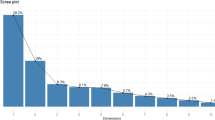Abstract
Diospyros kaki Thunb. originated in Eastern Asia, as evidenced of its culture in China as early as several centuries B.C. In the seventh century, persimmon was introduced to Japan and later, in the fourteenth century to Korea. There is no information about persimmon culture in Europe until the seventeenth century, with the spread over the world occurring in the eighteenth century. The genus Diospyros contains more than 400 species, with levels of ploidy ranging from diploid (2n = 2x = 30) up to nonaploid (2n = 9x = 135). The primary economic crop species is Diospyros kaki Thunb., which is mainly hexaploid (2n = 6x = 90) and includes hundreds of cultivars. Although a relatively recent introduction in Europe, the species has adapted well, and the genetic diversity have been expanded with culture and selection for the past 200 years in the Mediterranean basin. These locally adapted cultivars were evaluated with cultivars from Asian origin in a germplasm collection established at IVIA in Valencia, Spain. In this paper 27 cultivars from the IVIA collection were studied by multivariate analysis, and 37 variables were analyzed using a Principal Components Analysis and cluster analysis following the method UPGMA. Studies on correlations and significance among variables identified the most relevant ones, and thus provided information for a future core collection.



Similar content being viewed by others
References
Agustí M (2004) Fruticultura. Ediciones Mundiprensa. El caqui 408–417 (493 pp)
Badenes ML, Martínez-Calvo J, Llácer G (1998) Análisis of apricot germplasm from the European ecogeographical group. Euphytica 102:93–99
Bellini E (2002) Cultural practices for persimmon production. First Mediterranean symposium on persimmon. Options Méditerranéennes 51:39–52
Bellini E, Giordani E (2005) Germplasm and breeding of persimmon in Europe. Acta Hort 685:65–75
Bellini E, Benelli C, Giordani E, Perria R, Parfitt D (2003) Genetic and morphological relationships between possible Italian and ancestral cultivars of persimmon. Acta Hort 601:192–197
Buntjer JB (1997) Phylogenetic computer tools. Ver. 1.32 for Windows. Laboratory of Plant Breeding. Wageningen Agricultural University. The Netherlands
Cebolla Cornejo J (2004) Tesis doctoral. Recuperación de variedades tradicionales de tomate y pimiento. Caracterización y mejora genética. Universidad Politécnica de Valencia. Dep. Biotecnología
Cho SK, Cho TH (1965) Studies on the local varieties of persimmon in Korea. Res Rep RDA 8:147–190
Eriksson L, Johansson E, Kettaneh-Wold N, Wold S (1999) Introduction to multi- and megavariate data analysis using projection methods (PCA & PLS). Umetrics AB, Umea
FAO (2008) FAOSTAT. http://faostat.fao.org
Felsenstein J (2008) PHYLIP (Phylogeny Inference Package) versión 3.68. Distributed by the author. Department of Genetics, University of Washington, Seattle
García-Carbonell S, Yagüe B, Bleiholder H, Hack H, Meier U, Agustí M (2002) Phenological growth stages of the persimmon tree (Diospyros kaki). Ann Appl Biol 141:73–76
Iezzoni AF, Pritts MP (1991) Applications of principal components analysis to horticultural research. Hort Sci 26(4):334–338
Leguizamón J, Badenes ML (2003) Multivariate analysis as a tool for germplasm studies, example of análisis of germplasm loquat data. Acta Hort 606:29–35
Llácer G, Badenes ML (2002) Persimmon production and market. First Mediterranean symposium on persimmon. Options Méditerranéennes 51:9–21
Llácer G, Martínez-Calvo J, Naval M, Badenes ML (2008) From germplasm to fruit export: the case of ‘Rojo Brillante’ persimmon. Adv Hort Sci 22(4):281–285
Mantel N (1967) The detection of disease clustering and a generalized regression approach. Cancer Res 27:209–220
Mars M, Marrakchi M (1999) Diversity of pomegranate (Punica granatum L.) germplasm in Tunisia. Genet Resour Crop Evol 46:461–467
Pérez-González S (1992) Associations among morphological and phenológical characters representing apricot germplasm in Central Mexico. J Am Soc Hort Sci 117:486–490
Rohlf J (1996) Morphometric spaces, shape components and the effects of linear transformations. In: Marcus LF et al (eds) Advances in morphogenetics, pp 117–129
Sneath PHA, Sokal RR (1973) Numerical taxonomy. W. H. Freeman and Company, San Francisco
Sugiura A (1997) Keynote address. In: Proceedings of 1st international persimmon symposium Chiang Mai City, Thailand, 17–19 July 1996. Acta Horticulture, vol 436, pp 15–19
UPOV (2004) Working paper on test wide lines for Diospyros kaki L.f. TG/92/4, Ginebre, 31 March 2004
Wang R, Yang Y, Li G (1997) Chinese persimmon germplasm resources. Acta Hort 436:43–50
Yamada A, Tao R, Sugiura A (2005) Influence of low temperature before flowering on the occurrence of unreduced pollen in Japanese persimmon (Diospyros kaki Thunb.). HortScience 40:24–28
Yonemori K, Sigiura A, Yamada M (2000) Persimmon genetics and breeding. Plant Breed Rev 19:191–225
Zhuang D, Kitajima A, Ishida M, Sobajima Y (1990) Chromosome number of Diospyros kaki cultivars. J Jpn Soc Hort Sci 59:289–297
Acknowledgments
This study was funded by he Instituto Nacional de Investigaciones Agrarias (INIA) from Spain, grants number RF2007-00011 and RF2010-00003.
Author information
Authors and Affiliations
Corresponding author
Rights and permissions
About this article
Cite this article
Martínez-Calvo, J., Naval, M., Zuriaga, E. et al. Morphological characterization of the IVIA persimmon (Diospyros kaki Thunb.) germplasm collection by multivariate analysis. Genet Resour Crop Evol 60, 233–241 (2013). https://doi.org/10.1007/s10722-012-9828-4
Received:
Accepted:
Published:
Issue Date:
DOI: https://doi.org/10.1007/s10722-012-9828-4




